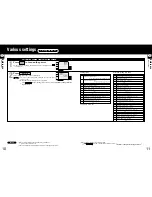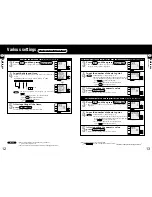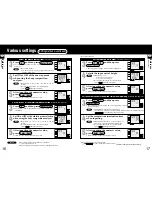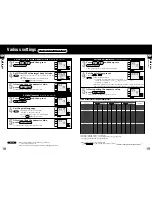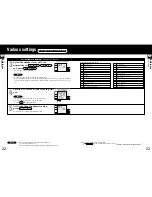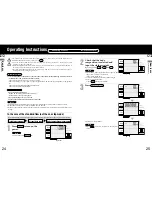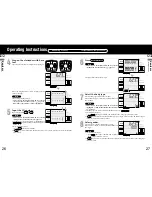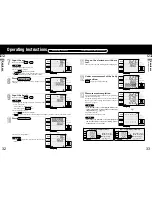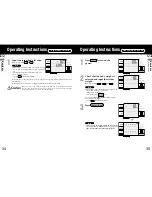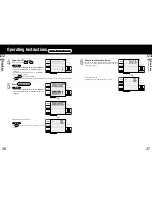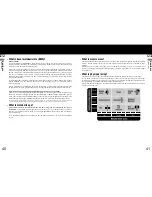
Healthy Range Indicator
Your Body Composition Analyzer automatically compares your body fat percentage reading to the
Healthy Body Fat Range chart. After your body fat percentage has been calculated, a black bar will flash
along the bottom of the display, identifying where you fall within the Body Fat Ranges for your age and
gender.
(-) :
Underfat; below the healthy body fat range. Increased risk for health
problems.
(0) :
Healthy; within the healthy body fat percentage range for your
age/gender.
(+) :
Overfat; above the healthy range. Increased risk for health problems.
(++) :
Obese; high above the healthy body fat range.
Greatly increased risk of obesity-related health problems.
*Note :
If you select Athlete mode, the unit will not display the Healthy
Range Indicator.
Athletes may have a lower body fat range depending on their
particular sport or activity.
How
to
u
se
(Various
criteria)
How
to
u
se
(Various
criteria)
GB
GB
39
38
- Criteria based on body fat percentage
Body fat percentage is the amount of body fat as a proportion of your body weight.
Reducing excess levels of body fat has shown to reduce the risk of certain conditions such as high blood
pressure, heart disease,diabetes and cancer. The chart below shows the healthy ranges for body fat.
Various criteria
- What is total body water percentage?
Total Body Water Percentage is the total amount of fluid in a person’s body expressed as a percentage
of their total weight.
Water plays a vital role in many of the body’s processes and is found in every cell,
tissue and organ. Maintaining a healthy total body water percentage will ensure the body functions
efficiently and will reduce the risk of developing associated health problems.
Your body water levels naturally fluctuate throughout the day and night. Your body tends to be
dehydrated after a longnight and there are differences in fluid distribution between day and night.
Eating large meals, drinking alcohol, menstruation, illness, exercising, and bathing may cause variations
in your hydration levels.
Your body water percentage reading should act as a guide and should not be used to specifically
determine your absolute recommended total body water percentage. It is important to look for long-term
changes in total body water percentage and maintain a consistent, healthy total body water percentage.
Drinking a large quantity of water in one sitting will not instantly change your water level. In fact, it will
increase your body fat reading due to the additional weight gain. Please monitor all readings over time
to track the relative change.
Every individual varies but as a guide the average total body water percentage ranges for a healthy
adult are:
Female :
45 to 60%
Male
:
50 to 65%
Source :
Based on Tanita's Internal Research
Note:
The total body water percentage will tend to decrease as the percentage of body fat increases. A
person with a high percentage of body fat may fall below the average body water percentage. As you
lose body, fat the total body water percentage should gradually move towards the typical range given
- What is visceral fat rating?
This feature indicates the rating of visceral fat in your body.
Visceral fat is the fat that is in the internal abdominal cavity, surrounding the vital organs in the trunk
(abdominal) area. Research shows that even if your weight and body fat remains constant, as you get
older the distribution of fat changes and is more likely to shift to the trunk area especially post
menopause. Ensuring you, have healthy levels of visceral fat my reduce the risk of certain diseases such
as heart disease, high blood pressure, and the onset of type 2 diabetes.
The Tanita Body Composition Analyzer will provide you with a visceral fat rating from 1 – 59.
Rating from 1 to 12
Indicates you have a healthy level of visceral fat. Continue monitoring your rating to ensure that it stays
within the healthy range.
Rating from 13 – 59
Indicates you have an excess level of visceral fat. Consider making changes in your lifestyle possibly
through diet changes or increasing exercise.
Source :
Data from Columbia University (New York) & Tanita Institute (Tokyo)
Note:
•Even if you have a low body fat rate, you may have a high visceral fat level.
•For medical diagnosis, consult a physician.

